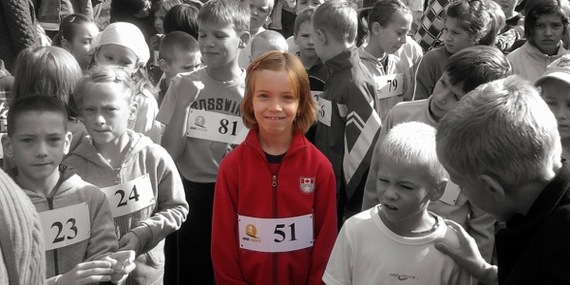'Tis the season... for asking kids to name what they're grateful for over turkey... for nudging them to give thanks for all those holiday presents...
... And, oops, for being slightly mortified by their, um, oblivious lack of gratitude?
Alas, kids don't come by an attitude of gratitude naturally. Just like sharing or turn-taking, it's a social skill they need to learn, says psychologist Jeffrey Froh, an associate professor at Hofstra University who's a leading gratitude researcher and co-author (with psychologist Giacomo Bono) of Making Grateful Kids: The Science of Building Character.
In fact, most kids--of any age--need to be shown the way on this one. Growing up in an age of such magical plenty and instant gratification, there are fewer built-in opportunities to develop a real appreciation for much of anything. Want new shoes? Let's look online, and they'll be here tomorrow. A new book or game? Download it right now. Kids get participation trophies for doing nothing and treat bags just for showing up at a party.
Is it any wonder that they're pros at feeling entitled and out of touch with gratitude?
"Keeping a gratitude journal for two weeks isn't going to give kids this virtue," Froh told me when I asked him for Kinstantly. "You have to weave it into the very fabric of their everyday lives."
All to build what Froh, whose own kids are 5 and 9, calls a "culture of appreciation" at home. For any of us to feel truly grateful, he told me, we have to recognize three things:
1) The intent: that somebody put me first.
2) The cost: what someone gave up for me (such as their time or their money).
3) The benefit: what I got out of it.
Talking about kind acts this way is a life-changer in helping kids understand gratitude, Froh points out. Say your neighbor helps you put in some plants on a Saturday afternoon when you know he'd rather be watching football on TV. You might tell your kids: "How cool that was for Keith to come over. He knew how much I had to do in the garden [the intent] and I know how much he loves the Jets -- but he gave up watching the game to help me [the cost]. And look how much we got done! [the benefit]."
Help your kids interpret kindnesses done to them in the same way, Froh says: "Hey James, that was pretty nice of Ryan to help you with your math when he knew you were struggling [intent]. I can't believe he gave up his soccer time to help you [cost] -- but how great that now you know your four times-table [benefit]!"
"I never once say the words intent-cost-benefit," adds Froh, who has developed a widely used school program on teaching 8- to 11-year-olds how to think gratefully. "But when you talk through what they gained, and what the other person gave up for them, they eat it up."
Over time, he says, kids start to adopt this three-part thinking for themselves. "Persistence pays off if you work at it."
You can use all the upcoming holiday gift-giving to reinforce the idea of gratitude, too. Froh suggests three simple ways to do it:
Give things that help your child meet "intrinsic goals."
Those are things that make kids happy because they feed personal growth or an interest (like dance lessons, a guitar, a science kit for a science buff) or build a sense of community (a ski pass for your son and his best friend, skates for the whole family). These kinds of gifts have been shown to make kids feel more -- and more lasting -- appreciation, he says.
Make things just one part of a menu of giving.
Some families give kids one item they need and one they want, for example. That sets up a good opportunity to explore with your child the difference between a want and a need. (So when they say, "I neeeeed this new game," you can rephrase it: "You need a bigger jacket. You want the new game.")
Get more bang from gifts by encouraging "savoring."
Look at old photos together from past trips and holidays, Froh suggests. Talk with your kids about the back stories to their favorite toys and books -- where they came from, and the kindness of the giver. And encourage waiting and wishing and anticipating; they all increase gratitude, he says.
Just imagine... hearing more than a rote, mumbled "thanks" after your child opens a great gift or you spend a day doing something special as a family. Our kids are capable of feeling and expressing amazingly heartfelt gratitude. We just have to teach them -- through lots of day-in, day-out examples, all year 'round -- that it's important.
You're welcome.
Paula Spencer Scott is content chief at Kinstantly, a new parenting resource, and has written extensively about family life. For more on raising great kids, follow Kinstantly on Facebook or Twitter and visit Kinstantly.com.
